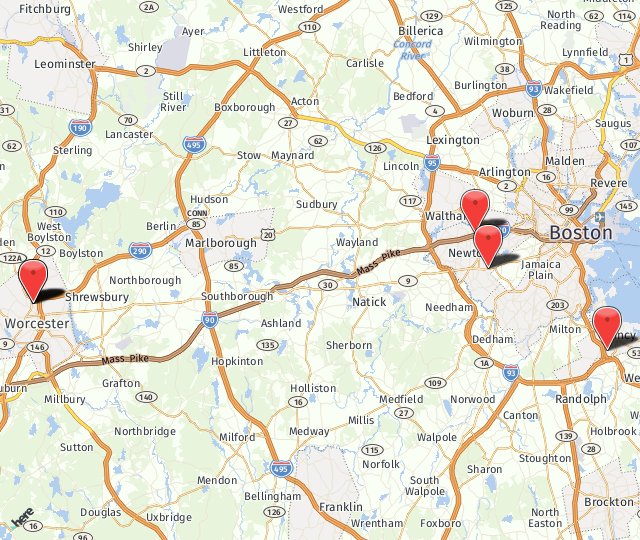Dr. Silverman is a board-certified plastic surgeon, but he also offers more than surgical procedures for our patients from Worcester and the surrounding towns. Our non-surgical offerings currently involve neuromodulator and dermal filler injections.
Here’s a brief description of our non-surgical treatments. For more detailed information, click through to the specific injectable.
These two neuromodulators are made from the botulinum toxin type A. When injected into a muscle in minute amounts, the botulinum toxin blocks the nerve messages sent from that muscle to the brain. The brain doesn’t receive the signal to contract the muscle, so the muscle remains at rest. Botox was first approved by the FDA for involuntary eyelid spasms in 1996. It became a household name when approved for cosmetic treatment of wrinkles on the upper third of the face in 2002. Wrinkles, such as crow’s feet, are caused by muscle contractions under the skin repeated over decades. When Botox and Dysport are injected into these muscles, they temporarily stop them from contracting, which stops the wrinkles from forming above them. Botox and Dysport are both neuromodulators, but different somewhat in their thickness and consistency.
Dermal fillers can be categorized as natural or synthetic. Natural fillers such as Restylane are hyaluronic acid-based and plump the skin by binding with water molecules. Radiesse is a synthetic filler that uses a two-pronged approach to plumping the skin and filling wrinkles. First, it uses calcium microspheres to add structure under the skin where collagen (the skin’s natural structural support) has dwindled. Second, it encourages the body to build new collagen in the area of the injection to continue supporting the skin for up to one year.
Restylane was the first dermal filler approved for use in the U.S. in 2006. It is a “natural” filler because it is made from hyaluronic acid, a naturally occurring substance in the human body responsible for hydrating, plumping, and firming the skin. When Restylane is injected beneath a wrinkle, crease, or area of volume loss, the hyaluronic acid instantly binds with nearby water molecules, returning volume, filling the area, and pushing the skin back upward. This erases the line or fills an area such as sunken cheeks.
Sculptra is classified as a “synthetic” filler. It works in a different manner than the hyaluronic acid fillers. When those fillers are injected beneath a wrinkle or area of volume loss, the hyaluronic acid instantly binds with nearby water molecules, plumping, firming, and hydrating the skin. Sculptra is different. It does not provide immediate results. Sculptra is made from poly-L-lactic acid (PLLA), which works within the skin to replace lost collagen. The PLLA microparticles are delivered in an aqueous gel. Sculptra is the first facial injectable that gives you subtle results over time as collagen is replaced. This makes for a natural-looking appearance that improves over time, not an instant change as with other fillers. Sculptra is injected in three sessions over three to four months for the best results.
Juvéderm, along with Restylane (see above), are the world’s most popular dermal fillers. Juvéderm is also a natural, hyaluronic acid filler. When injected Juvéderm instantly fills the area under a crease, pushing the skin back upward. Juvéderm has expanded from a single original filler to an entire line. Each filler in the line targets a different area of the face. Juvéderm and Restylane are very similar, yet they have subtle differences. They work to remove smile lines that run from the nose down to the corners of the mouth, marionette lines that run from the corners of the mouth downward, parentheses lines that frame the mouth on the sides, barcode lines above the upper lip, and others.

